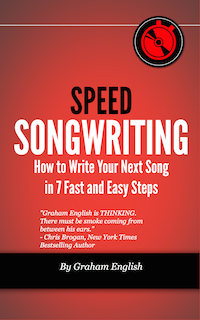
Songwriting is an intricate art form that combines musical composition and lyrical storytelling.
One effective technique to create captivating lyrics is incorporating short story elements. By applying these literary principles to your lyrics, you can achieve greater focus and evoke deeper emotions in your audience.
This article will discuss how to utilize short story techniques to elevate your lyric writing and engage listeners on a deeper level.
The Power of Narrative in Songwriting
Building a Compelling Setting
A well-crafted setting can transport your listeners into the world of your song. To create an immersive atmosphere, consider the following elements:
- Physical environment: Describe the location, time of day, and weather to set the scene. Be specific and evoke the senses.
- Emotional landscape: Convey the mood or feeling of the setting, such as nostalgia, longing, or joy.
- Historical context: If relevant, provide background information on the time period, social norms, or political climate.
By painting a vivid picture, you enable your audience to become invested in the story and empathize with the characters.
Developing Engaging Characters
Characters are at the heart of any story. To bring them to life in your lyrics:
- Give them a backstory: Develop a brief history for your characters, including their upbringing, relationships, and motivations.
- Create distinct voices: Use unique language, phrasing, or colloquialisms to distinguish one character from another.
- Show, don't tell: Instead of explicitly describing a character's emotions, reveal them through actions, reactions, or dialogue.
Strong, relatable characters evoke emotions and invite listeners to experience the story alongside them.
Crafting a Captivating Plot
A compelling plot keeps your audience engaged from beginning to end. To achieve this:
- Establish a clear goal: Define what the protagonist is trying to accomplish, whether it's finding love, overcoming adversity, or seeking redemption.
- Introduce conflict: Present obstacles or challenges the protagonist must overcome to reach their goal.
- Create a climax: Design a turning point where the protagonist faces their greatest challenge or makes a crucial decision.
- Resolve the story: Conclude the narrative by revealing the outcome of the protagonist's actions, allowing the listener to reflect on the journey.
Remember to maintain a clear focus and avoid unnecessary digressions.
Structuring Your Song for Maximum Impact
Verse-Chorus-Verse: The Classic Approach
The traditional verse-chorus-verse structure provides an ideal framework for incorporating short story elements:
- Verse 1: Introduce the setting and main characters.
- Chorus: Present the central theme or emotion that connects the narrative.
- Verse 2: Develop the plot by introducing conflict or exploring character relationships.
- Chorus: Reiterate the central theme or emotion.
- Bridge: Offer a new perspective or add a twist to the story.
- Chorus: Conclude by reinforcing the central theme or emotion.
This structure ensures a coherent narrative flow and keeps the listener engaged throughout the song.
Experimenting with Alternative Structures
While the verse-chorus-verse format is a popular choice, you can also experiment with other structures, such as:
- AABA (Verse-Verse-Bridge-Verse): This approach offers a strong sense of continuity, with the bridge providing a refreshing change in perspective.
- Through-composed: In this format, the song continually evolves without repeating sections, allowing for more complex narratives.
Find the structure that best supports your storytelling goals and enhances the overall impact of your song.
The Role of Imagery and Metaphor
To enrich your lyrics further, consider using imagery and metaphors to convey emotions and ideas more powerfully:
- Imagery: Employ descriptive language that appeals to the senses, such as sight, sound, touch, taste, and smell. This helps listeners visualize the story and connect with it on a deeper level.
- Metaphor: Use figurative language to draw comparisons between unrelated concepts, allowing you to express complex ideas or emotions in a more relatable and creative way.
Strategic use of imagery and metaphor can elevate your storytelling and make your lyrics more memorable and evocative.
Continuous Learning and Practice
Mastering the art of lyric writing requires dedication and practice.
Study the works of great songwriters and lyricists, analyze their techniques, and learn from their successes and failures. Continually refine your skills through experimentation and practice, and don't be afraid to take risks or challenge conventions.
As you grow as a songwriter, your ability to weave compelling narratives and craft emotionally resonant lyrics will only improve.
In conclusion, by applying short story techniques to your lyric writing, you can create powerful songs that resonate with your audience and stand out in today's competitive music landscape.
Embrace the power of narrative, experiment with various structures, and continually refine your skills to produce genuinely captivating and unforgettable songs.

Enter your first name and email address below and click “GET ACCESS NOW!” to get the Speed Songwriting Cheat Sheet delivered to your inbox!
We guarantee 100% privacy. Your information will not be shared.

Leave a Reply